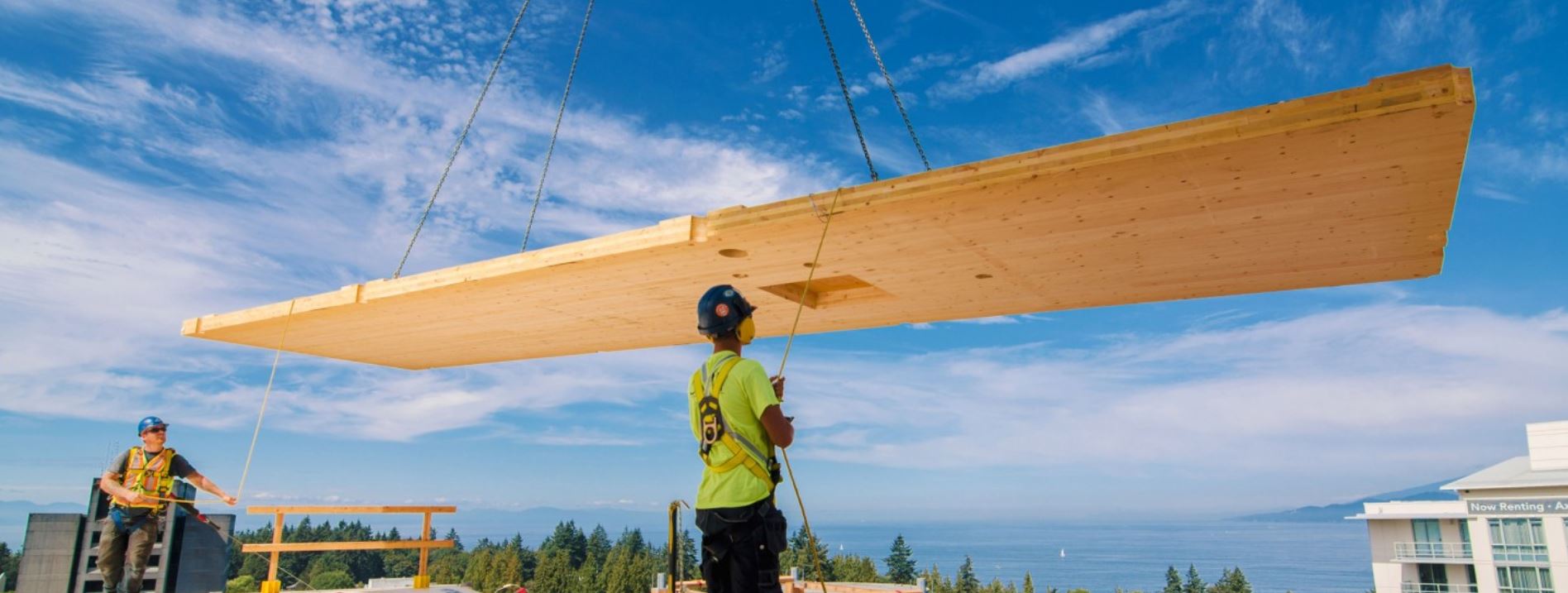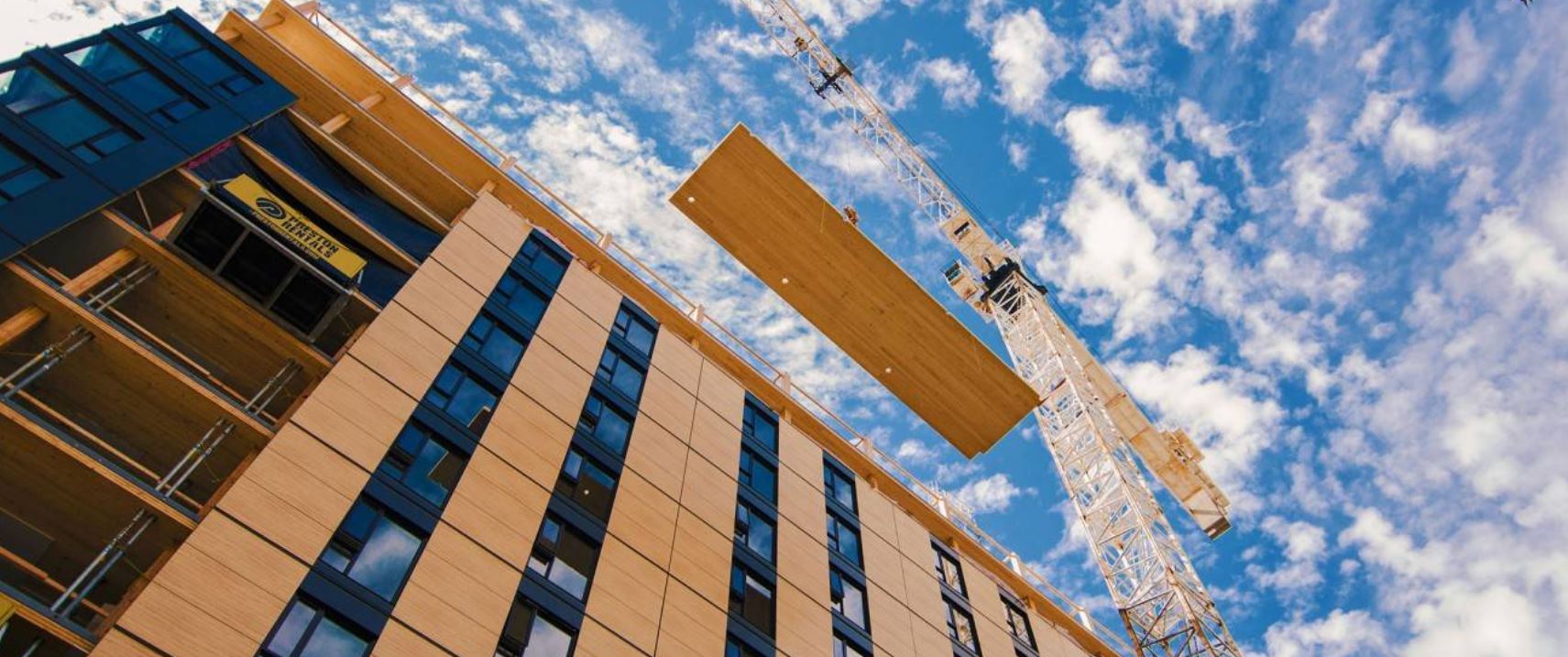What the heck is CLT?
Posted: December 8, 2017The building industry is constantly growing, evolving, and changing. As technology and science continue to advance, new products are created every day. The Forest Products industry is no different.
One of the newest advances within the Forest Products Industry is the development of CLT. In the next few months, we will be posting articles and information on the benefits and sustainability of CLT in order to educate and create a dialog about this new growing segment within the building community.
Sustainable Lumber Co. has always been a pioneer and champion of forest sustainability and will continue to educate and advocate for healthy forests.
So, what the heck is CLT?
Cross-laminated timber (CLT) is a sustainable wood panel product made from gluing layers of solid-sawn lumber together. Each layer of boards is orientated perpendicular to adjacent layers and glued on the wide faces of each board, usually in a symmetric way so that the outer layers have the same orientation. Regular timber is an anisotropic material, meaning that the physical properties change depending on the direction in which the force is applied. By gluing layers of wood at perpendicular angles, the panel is able to achieve better structural rigidity in both directions. It is similar to plywood but with distinctively thicker laminations.
CLT was first developed and used in Germany and Austria in the early 1990s, but it was only after the mid-1990s more extensive research was completed. By the 2000s, cross-laminated timber for construction saw much wider usage in Europe, being used in various building systems such as single-family and multi-story housing. Sustainability is the main reason behind the rise of cross-laminated timber. A benefit of CLT is that it doesn’t have detrimental effects on the environment which also improves marketing and availability.
In 2015, CLT was incorporated into the national design specification for wood construction. This specification was used as a reference for the 2015 international building code, in turn allowing CLT to be recognized as a code-compliant construction material. These code changes permitted CLT to be used in the assembly of exterior walls, floors, partition walls, and roofs. Also included in IBC 2015 were char rates for fire protection, connection provisions, and fastener requirements specific to CLT. To meet structural performance requirements, the code mandated that structural CLT products meet the requirements specified by ANSI/APA PRG 320.
CLT has various other benefits making it an attractive building material. The CLT benefits include:
- Design flexibility – CLT has many applications. It can be used in walls, roofs, or ceilings. The thickness of the panels can easily be increased by adding more layers and the length of the panels can be increased by joining panels together.
- Eco-Friendly – CLT is a green and sustainable material since it is made out of renewable wood, sequesters carbon, and does not require the burning of fossil fuels during production.
- Prefabrication – Floors or walls made from CLT can be fully manufactured before reaching the job site, which decreases lead times and could potentially lower overall construction costs.
- Thermal insulation – Being made out of multiple layers of wood, the thermal insulation of CLT can be high depending on the thickness of the panel.
Special thanks to Structurlam for this short educational video on CLT:


